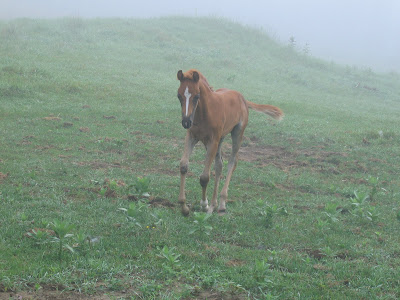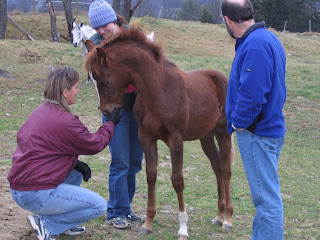The summer of 2009 was a busy one for us here at Morningside Farm. After 25 years of neglect, our excavator genius, Jeremy Bogie began thinning out our overgrown sugar woods, harvesting almost anything not Maple, leaving a few species behind. November 2009 was a gift from God as we were blessed with shirt sleeve weather enabling us to string our sap lines under the tutelage of Glen Goodrich, retired engineer professor from the Goodrich's Maple Farm of Cabot, Vermont.

2010 brought everyone a very early start to sugaring in Vermont. The sap started flowing late in February catching nearly everyone off guard since a typical sugaring season runs from March thru April. But Jeremy teaming up with his uncle Jeff Stewart hopped right to it getting the taps drilled and hooked up to the sap lines as sap poured into the sugar house and the boiling began. The first syrup was made March 3rd! The sugar house was originally built by the Fiske family who kept a year by year, day by day diary recorded on the walls inside the sugar house. This was by far the earliest recording and as it turned out, the longest run, too. The Fiske family had eventually drilled 760 taps with the most syrup made recorded at 210 gallons. Jeremy and Jeff finished up March 31st with a total of 265 gallons from 673 taps. Pretty good for their first year!

Jeff Stewart (left) and Jeremy Bogie
Glen Goodrich gave several weekend lectures on the topic of producing maple syrup. It was there that we learned about using a vacuum pump to help gravity increase the flow of sap to the bulk storage tanks before being drawn into the boiling pans within the sugar house. Jeremy used his skill as an excavator to prepare roads within the maple orchard and carefully graded the land to house the stainless steel bulk storage tanks.

This was my first experience sugaring. I had never even watched maple syrup being boiled, except once for 5 minutes at Rob Zambon's newly built sugar house last winter in South Rygate. This was a thrill for my husband, John and me to watch as these two very capable gentlemen and their families gave life once again to the gifts of nature. It is a fact that tapping a tree is like a mother breast feeding her baby. The more the baby needs, the more the mother makes. And so it is with making maple syrup. Mr. Goodrich's family farm has been making maple syrup since the mid 1830's from the same maple orchard and many of the trees are incredibly old and healthy.

We had many visitors. There was Betty, Jeff's wife, Amanda, Jeremy's wife, Kevin, Danny and Abbey, John in the red hat. Eric, Jeff's son worked diligently connecting the power from a newly strung power line from 150 feet away! How many old time sugar houses have their own electric stove to heat water and cook meals? Betty never tired of making us sugar on snow! And then there was the day that Jeremy showed the children how maple trees were tapped the old fashion way as he hung a few buckets from the untapped maple trees surrounding the sugar house.
Abbey, Danny, Amanda, Jeremy, Kelsey and Libby

Jeremy taps a tap as Kelsey and Libby look on
Kelsey samples a drip of sap
The bucket is hung. Amanda records it with a photo.


















































